The Healing Power of Ancient Ingredients
When translated literally, “Sana, Sana, Colita de Rana” means “heal, heal, little frog's tail.” It is an expression that’s commonly used in many Latino communities to console someone, most often a child, who has been hurt. Chef Maria Parra Cano chose the name Sana Sana for her plant-based ancestral foods company because she’s on a mission to help heal a community that suffers from high rates of diabetes and hypertension, through food.
The business that Chef Maria and her husband Brian are building is getting a big boost by having access to the licensed commercial kitchen at the Phoenix Indian School Visitor Center, one of three historical buildings at Phoenix’ Steele Indian School Park. Native American Connections, Inc. (NAC) partnered with the City of Phoenix to renovate the historic building and with the Phoenix Indian Center to repurpose it as a new multifaceted community resource. The plan for the space is based on extensive outreach to and input from tribes all over the state of Arizona who will be using it, including many people with a personal connection to the school, either as a student or a descendent of one.
The Phoenix Indian School Visitor Center (Visitor Center) opened its
When translated literally, “Sana, Sana, Colita de Rana” means “heal, heal, little frog's tail.” It is an expression that’s commonly used in many Latino communities to console someone, most often a child, who has been hurt. Chef Maria Parra Cano chose the name Sana Sana for her plant-based ancestral foods company because she’s on a mission to help heal a community that suffers from high rates of diabetes and hypertension, through food.
The business that Chef Maria and her husband Brian are building is getting a big boost by having access to the licensed commercial kitchen at the Phoenix Indian School Visitor Center, one of three historical buildings at Phoenix’ Steele Indian School Park. Native American Connections, Inc. (NAC) partnered with the City of Phoenix to renovate the historic building and with the Phoenix Indian Center to repurpose it as a new multifaceted community resource. The plan for the space is based on extensive outreach to and input from tribes all over the state of Arizona who will be using it, including many people with a personal connection to the school, either as a student or a descendent of one.
The Phoenix Indian School Visitor Center (Visitor Center) opened its doors in 2017 and offers arts, cultural, health, wellness, nutrition, educational, and economic development programs to benefit the urban Native American community, which numbers over 100,000 people in the greater Phoenix area. The commercial kitchen is itself multipurpose, offering entrepreneurial food businesses a place not just to cook, but to educate other members of the community. Chef Maria and others hold workshops at the Visitor Center focused on the relationship between food and health outcomes.
A Boost from AHEAD
To help get the Visitor Center project off the ground, NAC’s President and CEO Diana “Dede” Yazzie Devine partnered with Bank member Western Alliance Bank to tap FHLBank San Francisco’s AHEAD Program, which provides grants for initiatives designed to address specific economic development, educational, or social service needs of underserved communities. The Phoenix Indian School Visitor Center project covers all three bases and received a $20,000 AHEAD grant in 2017, specifically for the commercial kitchen build-out.
NAC works to improve the lives of individuals and families through Native American culturally appropriate behavioral health, affordable housing, and community development services. Dede is a member of the Bank’s Affordable Housing Advisory Council, and NAC has won 20 Affordable Housing Program (AHP) grants since 1996. But NAC had never applied for AHEAD funding. “This project was out of our normal wheelhouse, and it can be hard to get funding for something new,” Dede says. “So the AHEAD grant was really helpful.”
NAC leveraged the AHEAD grant with other funders, and once all the licensing was complete for the kitchen, chefs like Maria came on board and the kitchen started generating revenue. Since it opened, the Visitor Center has surpassed expectations for the use of its event space and has been welcoming about 420 visitors a month.
“Western Alliance Bank is pleased to be one of the member banks participating in the AHEAD Program,” said Tim Bruckner, Chief Credit Officer. “The program has helped us meet the needs of the less advantaged in our community, with grants that truly help make projects happen that otherwise would not have sufficient funding. Our bank has been particularly supportive of Native American Connections because of their deep connection to, and support for, our community.”
Restoring a Native American Presence at the Park
The Visitor Center is housed in what was once the music building on the former Phoenix Indian School, which closed in 1990 after 99 years as a boarding school operated by the U.S. government to socialize and assimilate Native American children. A small museum located within the building seeks to tell the story of the school and pay tribute to the students of the past – many of whom carved their names on the building’s exterior bricks.
Museum Curator Rosalie Talahongva, who spent one year as a student at the school herself before it closed, is an ideal tour guide for visitors unfamiliar with the site’s history, especially local students. She shares that often they get very quiet when she asks them to imagine what life was like at the boarding school in its earliest days. “You’re five years old and taken away from everything you know,” she relates. “Your language is wrong, your religion is wrong, your culture is wrong.”
Today, the Visitor Center encourages former students to visit and share their memories and school mementos – trophies, letter jackets, yearbooks, and more are on display. The Center hopes to digitize the yearbooks so more people can have access to the rich stories captured on aging and fragile pages.
Reaching Back to Return to Health
Chef Maria Parra Cano, an Xicana Indigena born and raised in Phoenix, is owner and “mami-preneur” of Sana Sana Foods. She learned to cook indigenous cuisines from Central and Southern Mexico at a very young age from her mother. She went on to receive her undergraduate degree from Arizona State University, an MBA from Grand Canyon University, and a culinary arts degree from Scottsdale Culinary Institute – Le Cordon Bleu. When she prepares a meal for an event at the Center, Chef Maria creates a display of ingredients that has special meaning. “It’s to honor my mother, our ancestors, and the spirits who may be here with us,” she explains.
Maria’s journey from cooking Cordon Bleu-style to using the tagline “Food Medicine for the People” as a touchstone for a growing and multifaceted business – catering, a food truck, workshops, aspiring to a brick-and-mortar establishment and online store – is intensely personal. “I had stage-four liver disease, along with hypertension and diabetes, onset with my first pregnancy,” Maria says. “My oldest daughter is six now, and I was able to reverse all three conditions just through the foods.”
Placing Native people in boarding schools and on reservations broke the old relationship with food – an aspect of environmental justice here is allowing people to reclaim it.Diana “Dede” Yazzie Devine President and CEO, Native American Connections
While demographic data can be hard to come by for Native American communities because the population is so small and data collection on remote reservations can be difficult, some health-related disparities are clear. “In Arizona,” Dede says, "three tribes have been identified as having as high a Type-2 diabetes rate as any other place in the world.” Chef Maria and husband Brian, now with three more children, decided that they needed to spread the message that reconnecting with their ancestral roots through diet could be especially healing for a community that has disproportionate rates of diabetes and other negative outcomes.
In her cooking, Chef Maria uses plant-based ingredients that connect directly to her community’s ancestral lineage: Sana Sana’s dishes promote specific ingredients on which her ancestors not only survived, but thrived. A meal she recently prepared in the kitchen included a granola made of ancient grains, a Green Tomatillo Chili full of vegetables, Red Tepary Beans with Cholla Buds (from an edible cactus), and wild rice, with sweet pumpkin tamales for dessert.
A key ingredient in the granola she prepares is amaranth, a flavorful, nourishing seed that packs a powerful punch of plant-based protein. “Early colonizers outlawed amaranth, it was a way to control the native population,” she says. “Our goal is to stop the generational trauma associated with diabetes, hypertension, and liver disease – the three health disparities directly connected with food.” For Maria and Brian, Sana Sana is more than the family business, it’s a plant-based movement aimed at healing. Judging by how busy they’ve become – to keep up with it all, they recently hired two employees – it’s a movement that will have a big impact on their community.


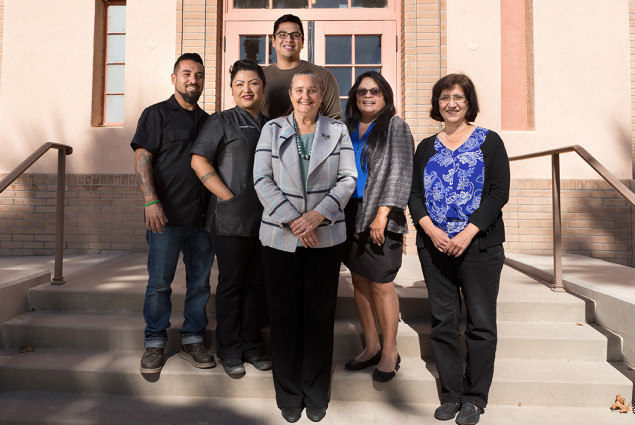 (l-r) Brian Cano, Chef Maria Parra Cano, Raymond Montour, Rosalie Talahongva, Margot Cordova, with Dede Yazzie Devine (center) at the Phoenix Indian School Visitor Center.
(l-r) Brian Cano, Chef Maria Parra Cano, Raymond Montour, Rosalie Talahongva, Margot Cordova, with Dede Yazzie Devine (center) at the Phoenix Indian School Visitor Center.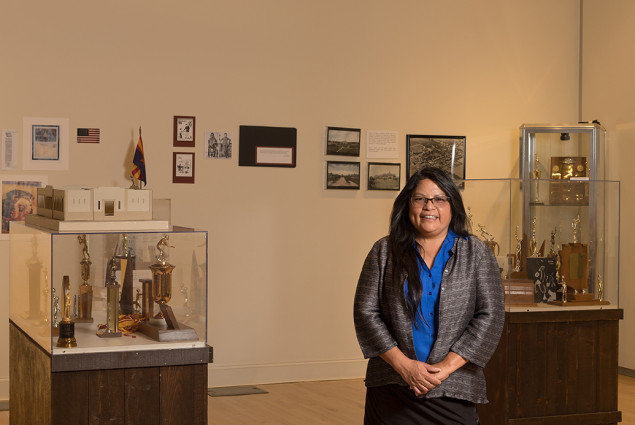 Rosalie Talahongva is the Visitor Center's museum curator and was a student at the school.
Rosalie Talahongva is the Visitor Center's museum curator and was a student at the school.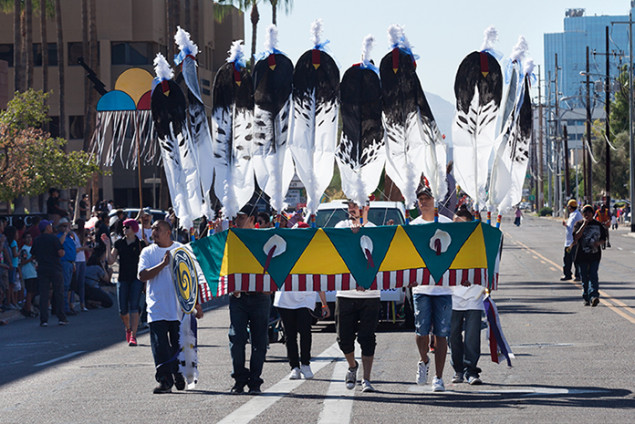 The grand opening of the Phoenix Indian School Visitor Center was celebrated with a parade in 2017.
The grand opening of the Phoenix Indian School Visitor Center was celebrated with a parade in 2017.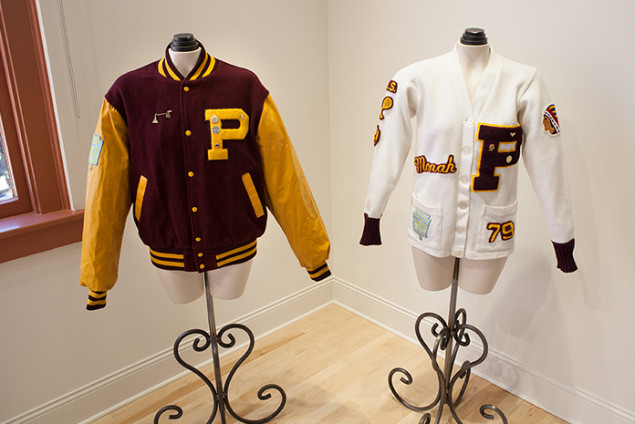 The museum is collecting memorabilia - and stories - from former students.
The museum is collecting memorabilia - and stories - from former students.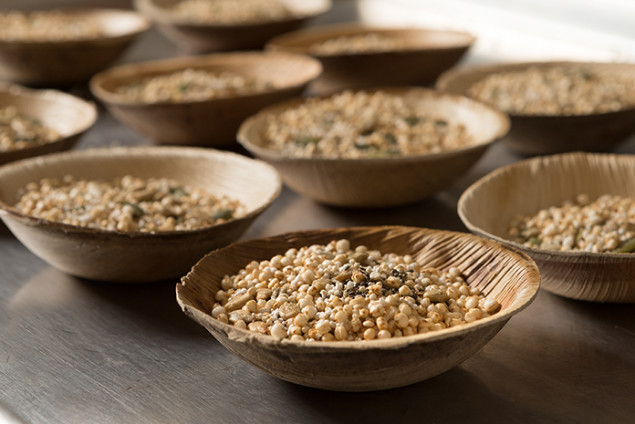 Some of Chef Maria's indigenous ingredients.
Some of Chef Maria's indigenous ingredients.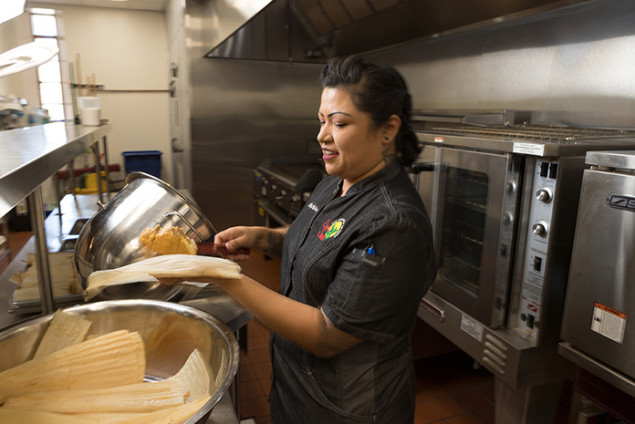 Chef Maria preparing sweet pumpkin tamales.
Chef Maria preparing sweet pumpkin tamales.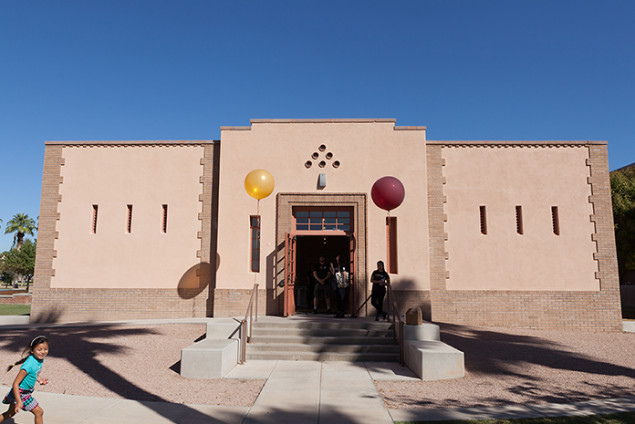 The Visitor Center on opening day.
The Visitor Center on opening day.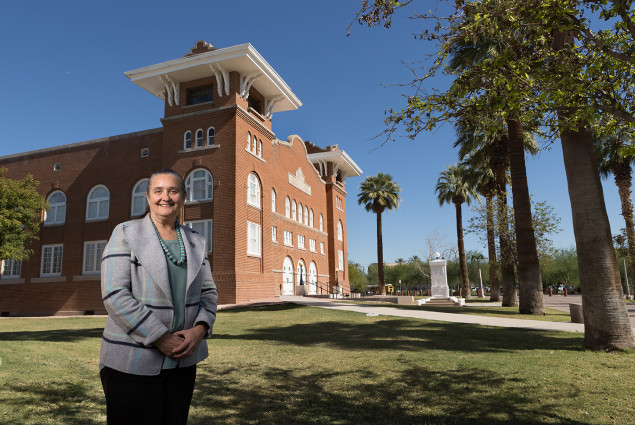 Dede Yazzie Devine, President and CEO of Native American Connections. In the background is the park's Memorial Hall, built in 1922 to commemorate the students from the school who died fighting for the United States in World War I.
Dede Yazzie Devine, President and CEO of Native American Connections. In the background is the park's Memorial Hall, built in 1922 to commemorate the students from the school who died fighting for the United States in World War I.